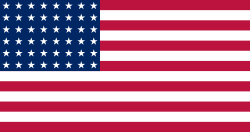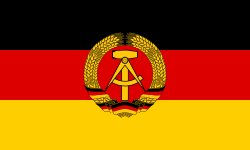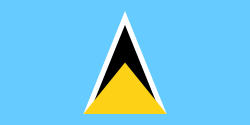Betty Cuthbert
| Betty Cuthbert | ||||||||||||||||||||||||||||
| Voller Name | Elizabeth Alyse Cuthbert | |||||||||||||||||||||||||||
| Nation | ||||||||||||||||||||||||||||
| Geburtstag | 20. April 1938 | |||||||||||||||||||||||||||
| Geburtsort | Sydney | |||||||||||||||||||||||||||
| Größe | 169 cm | |||||||||||||||||||||||||||
| Gewicht | 57 kg | |||||||||||||||||||||||||||
| Sterbedatum | 6. August 2017 | |||||||||||||||||||||||||||
| Karriere | ||||||||||||||||||||||||||||
|---|---|---|---|---|---|---|---|---|---|---|---|---|---|---|---|---|---|---|---|---|---|---|---|---|---|---|---|---|
| Disziplin | Sprint | |||||||||||||||||||||||||||
| Bestleistung | 11,4 s (100 m) 23,2 s (200 m) 52,01 s (400 m) | |||||||||||||||||||||||||||
| Medaillenspiegel | ||||||||||||||||||||||||||||
| ||||||||||||||||||||||||||||
| ||||||||||||||||||||||||||||
Elizabeth Alyse „Betty“ Cuthbert AC, MBE (* 20. April 1938 in Sydney, New South Wales; † 6. August 2017 in Mandurah, Western Australia[1]) war eine australische Leichtathletin, die 1956 und 1964 insgesamt viermal Olympiasiegerin wurde. Sie ist nach der Zahl der Goldmedaillen eine der erfolgreichsten Leichtathletinnen aller Zeiten.
Karriere
Cuthbert begann erst in der High School mit dem Sprinttraining und lief im Frühjahr 1956 in 23,2 s Weltrekord im 200-Meter-Lauf. Dies machte sie zur Favoritin bei den Olympischen Spielen in Melbourne im gleichen Jahr. Zunächst startete sie in Melbourne jedoch im 100-Meter-Lauf, bei dem ihre Landsfrau und erfahrene Olympionikin Shirley Strickland de la Hunty als Weltrekordhalterin die eindeutige Favoritin war. Es kam einer Sensation gleich, als Strickland bereits in den Vorläufen ausschied. Cuthbert gewann schließlich überlegen das Finale und damit ihre erste Goldmedaille in 11,5 s vor der für die gesamtdeutsche Mannschaft startenden Christa Stubnick (11,7 s) aus der DDR und ihrer Landsfrau Marlene Mathews (ebenfalls 11,7 s). Vier Tage nach diesem noch relativ überraschenden Erfolg siegte sie über 200 Meter als Favoritin mit großem Vorsprung in 23,4 s wiederum vor Stubnick (23,7 s) und Mathews (23,8 s). Ihre dritte Goldmedaille gewann sie mit der australischen 4-mal-100-Meter-Staffel.
Bei den Olympischen Spielen 1960 in Rom wurden ihre Spezialdisziplinen 100 und 200 Meter von der US-Amerikanerin Wilma Rudolph dominiert. Cuthbert schied bei 100 Meter bereits in den Vorläufen aus, trat über 200 Meter nicht mehr an und beendete vorläufig ihre Karriere.
Bei den British Empire and Commonwealth Games 1962 in Perth kam sie zurück auf die internationale Leichtathletikbühne – diesmal über 400 Meter. Dieser Wechsel zahlte sich aus, und Betty Cuthbert gewann über 400 Meter ihre vierte olympische Goldmedaille bei den Olympischen Spielen 1964 in Tokio.
1979 wurde bei ihr Multiple Sklerose diagnostiziert. Auf einen Rollstuhl angewiesen, gehörte sie zu den Trägern der olympischen Fackel bei der Eröffnungszeremonie der Olympischen Spiele 2000 in Sydney. 2012 wurde Cuthbert in die IAAF Hall of Fame aufgenommen.
Im August 2017 erlag sie ihrer knapp 40 Jahre währenden Krankheit.
Einzelnachweise
Weblinks
- Betty Cuthbert in der Datenbank von Olympedia.org (englisch)
- Betty Cuthbert in der Datenbank von Athletics Australia (englisch)
- Betty Cuthbert auf Olympics.com – The Official website of the Olympic movement.
- Kurzbiografie auf der Website des IOC
- Cuthbert, Betty (1938 - 2017), Eintrag in The Australian Women’s Register, 16. September 2002 (zuletzt verändert am 7. August 2017)
| Personendaten | |
|---|---|
| NAME | Cuthbert, Betty |
| ALTERNATIVNAMEN | Cuthbert, Elizabeth Alyse |
| KURZBESCHREIBUNG | australische Leichtathletin |
| GEBURTSDATUM | 20. April 1938 |
| GEBURTSORT | Sydney, New South Wales |
| STERBEDATUM | 6. August 2017 |
| STERBEORT | Mandurah, Western Australia |
Auf dieser Seite verwendete Medien
Pictograms of Olympic sports – . This is an unofficial sample picture. Images of official Olympic pictograms for 1948 Summer Olympics and all Summer Olympics since 1964 can be found in corresponding Official Reports.
Flag of Australia, when congruence with this colour chart is required (i.e. when a "less bright" version is needed).
See Flag of Australia.svg for main file information.Autor/Urheber: B1mbo, Lizenz: CC BY-SA 2.5
Zeichnung einer Goldmedaille, basierend auf Olympic rings.svg.
Autor/Urheber: B1mbo, Lizenz: CC BY-SA 2.5
Zeichnung einer Silbermedaille, basierend auf Olympic rings.svg.
Autor/Urheber: B1mbo, Lizenz: CC BY-SA 2.5
Zeichnung einer Bronzemedaille, basierend auf Olympic rings.svg.
Olympic Rings without "rims" (gaps between the rings), As used, eg. in the logos of the 2008 and 2016 Olympics. The colour scheme applied here was specified in 2023 guidelines.
Logo von: Commonwealth Sport – Organisation
US Flag with 48 stars. In use for 47 years from July 4, 1912, to July 3, 1959.
Flag of Second Polish Republic and later People's Republic of Poland in period from March 29, 1928 to March 10, 1980. Red shade used here is HTML "vermilion" #E34234. Proportion 5:8.
Flag of Second Polish Republic and later People's Republic of Poland in period from March 29, 1928 to March 10, 1980. Red shade used here is HTML "vermilion" #E34234. Proportion 5:8.
Die Staatsflagge der Deutschen Demokratischen Republik, vom 1. Oktober 1959 bis 3. Oktober 1990
(c) I, Cmapm, CC BY-SA 3.0
The flag of the Soviet Union (1955-1991) using a darker shade of red.

(c) I, Cmapm, CC BY-SA 3.0
The flag of the Soviet Union (1955-1991) using a darker shade of red.

Flag of Belarus 1995-2012
Flag of Belarus 1995-2012
Flagge des Vereinigten Königreichs in der Proportion 3:5, ausschließlich an Land verwendet. Auf See beträgt das richtige Verhältnis 1:2.
Flagge des Vereinigten Königreichs in der Proportion 3:5, ausschließlich an Land verwendet. Auf See beträgt das richtige Verhältnis 1:2.
Die Flagge der Dominikanischen Republik hat ein zentriertes weißes Kreuz, das bis zu den Rändern reicht. Dieses Emblem ähnelt dem Flaggendesign und zeigt eine Bibel, ein Kreuz aus Gold und sechs dominikanische Flaggen. Um den Schild herum sind Oliven- und Palmzweige und oben am Band steht das Motto "Dios, Patria, Libertad" ("Gott, Land, Freiheit") und zur liebenswürdigen Freiheit. Das Blau soll für Freiheit stehen, Rot für das Feuer und Blut des Unabhängigkeitskampfes und das weiße Kreuz symbolisierte, dass Gott sein Volk nicht vergessen hat. "Dominikanische Republik". Die dominikanische Flagge wurde von Juan Pablo Duarte, dem Vater der nationalen Unabhängigkeit der Dominikanischen Republik, entworfen. Die erste dominikanische Flagge wurde von einer jungen Dame namens Concepción Bona genäht, die in der Nacht des 27. Februar 1844 gegenüber der Straße von El Baluarte, dem Denkmal, an dem sich die Patrioten versammelten, um für die Unabhängigkeit zu kämpfen, wohnte. Concepción Bona wurde von ihrer Cousine ersten Grades unterstützt Maria de Jesús Pina.
Women's 100 m final at the 1956 Olympics. Left-right: Betty Cuthbert, Marlene Mathews, Heather Armitage
The Canadian Red Ensign used between 1921 and 1957.
This image has compared for accuracy (mainly colors) using an image from World Statesmen. The only change is making the maple leaves green from red. This image has compared for accuracy (mainly colors) using an image from World Statesmen. The most recent version of this image has changed the harp into one with a female figure; see [http://flagspot.net/flags/ca-1921.html FOTW




























